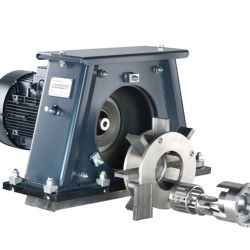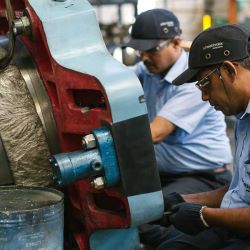Superfast flipping of connecting rods and other new tricks
We have a saying in the Applications team at Wheelabrator – the customer doesn’t want the machine, they want the end result. It sounds obvious, but it actually has profound implications not just for how we identify the right equipment for a customer, but for development and innovation in our field.
Put simply, rather than trying to fit an existing machine to a customer’s requirements, we look at how we develop our machines to give the customer exactly what they need.
Of course, Wheelabrator’s standard machines are suitable for a wide variety of requirements already – they’ve been designed with industry needs in mind and proven in the field. But if there’s one thing our design and development teams love it’s a new challenge from a customer. Sometimes that involves teaching a machine impressive new tricks.
Flipping connecting rods
A great recent example of this is a machine we’ve been developing for a large automotive manufacturer. The challenge: to peen connecting rods faster.
Connecting rods in internal combustion engines are exposed to immense stresses and need to be shot peened to ensure they don’t fail in everyday use. The problem: with annual passenger car production standing at around 80m and assuming an average four connecting rods per engine, the industry has to make – and peen – an awful lot of them.
Our customer needed to shot peen connecting rods continuously and at a very high throughput – and from both sides. To do this, the rods are usually sent through one half of a machine before going down a chute so that they are turned for peening on the other side in the second half of the machine.
This set-up is common for this process but can cause issues. In particular, the chute mechanism which turns the rods over has a couple of fundamental flaws. Firstly, it can’t deal easily with any changes to the shape of connecting rods and secondly it can get jammed. What’s more, when it gets jammed, this often isn’t registered by the machine quickly enough, making it worse before action is taken. When you need a high throughput on a machine, this is a real problem. So what’s needed is a better way of flipping the connecting rods.
Our solution to this challenge was designed in our Burlington Technology Center and built in our LaGrange, Georgia manufacturing facility. The machine we delivered still follows the two blast compartment design, but with one big difference: a specialized robot does the turn over in between the two blast compartments.
The connecting rods pass along a conveyor and one side is peened. At the end of the conveyor they are grabbed, flipped and placed on the conveyor for the second half of the machine by a robot – a movement which takes mere seconds.
The robot solution to flipping the rods is completely new and unique – and also now patent-pending. It eliminates the problems connected with the chute design and is adaptable if the connecting rod shapes change.
In addition to this, we’ve also installed sensors throughout the whole machine which ensure that if there are any problems they’re picked up straight away. In such a high throughput machine this is vital, as any issue needs to be resolved quickly before it becomes a complete bottleneck for production.
The exciting thing about this development is that it’s been designed in such a way that it can be retrofitted to existing machines which currently use the chute mechanism, as well as being introduced on new ones.
Small innovations, big difference
Not all innovations are as significant as developing a new robot. But that’s not to say they aren’t just as valuable to our customers.
When a long-time Wheelabrator customer, approached us about a new machine, they told us that, operating their existing blast machine, they’d come to the conclusion that maintenance would be easier if the connections between screws and screw shafts were slightly different.
Working with the customer’s initial designs, we developed a new machine for them which met their requirements for the screws and ultimately helped reduce maintenance time.
It never ceases to amaze me how something which seems like a small change can make a really big difference. With technology moving at an ever faster pace, there’s always something new to make possible, to make happen, or to make better for our customers.


